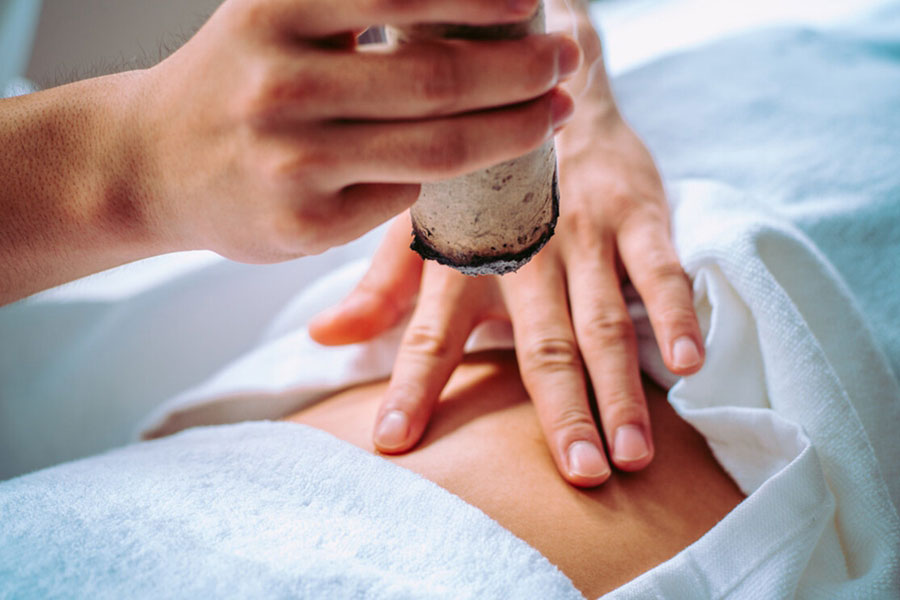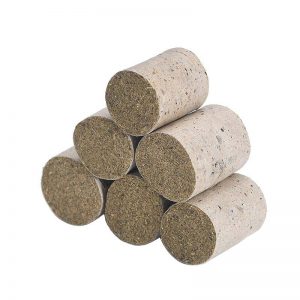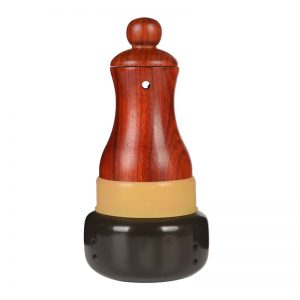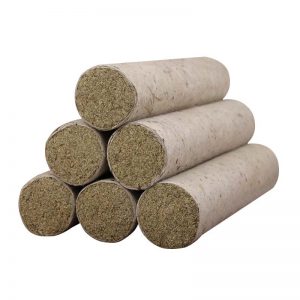A commonly seen syndrome in the clinic, the symptoms of functional dyspepsia include chronic recurring or enduring pain in the epigastrium, gastric distension after meals, easily becoming full, belching, nausea and vomiting. The disease can be further divided into organic and functional dyspepsia.
Functional dyspepsia, also called non-ulcer dyspepsia (NUD), features the above chronic and recurring symptoms that have lasted more than four weeks and without organic pathological changes.
In TCM, this disease is located in the stomach, and is related to the liver and spleen. It is usually caused by irregular eating habits that damage the spleen and stomach, or anxiety and anger that impair the liver and the spleen. Deficiency of middle qi or an invasion of external pathogens can lead to a failure of the spleen’s ability to transport nutrients and a failure of the stomach’s ability to harmonize and descend. This blocks qi movement, and the ascending function of the spleen and descending function of the stomach become impaired. With qi movement in the middle jiao inhibited, the symptoms of functional dyspepsia appear.
Clinical manifestations of functional dyspepsia
- An uncomfortable feeling in the epigastrium includes pain, gastric distension after eating, easily becoming full, belching, a poor appetite, nausea and vomiting that have lasted for more than four weeks.
- Endoscope finds no organic pathology, such as gastric or duodenal ulcers, erosion,or tumors. There is no sign of esophagitis, and also no history of the above diseases.
6 Acupuncture points for functional dyspepsia
The therapeutic principles include fortifying the spleen, harmonizing the stomach, soothing the liver and rectifying qi. Acupoints are chosen based on the following principles: the spleen governs ascent of the clear; the liver governs the free flow of qi; the san jiao governs the normal movement of qi.
1. ST 25 Acupoint (Tianshu)

Location: On the abdomen 2 cun lateral to the umbilicus, in the rectus abdominis muscle.
Effect: Regulates the stomach and intestines, and rectifies qi to disperse stagnation.
2. CV 12 Acupoint (Zhongwan)
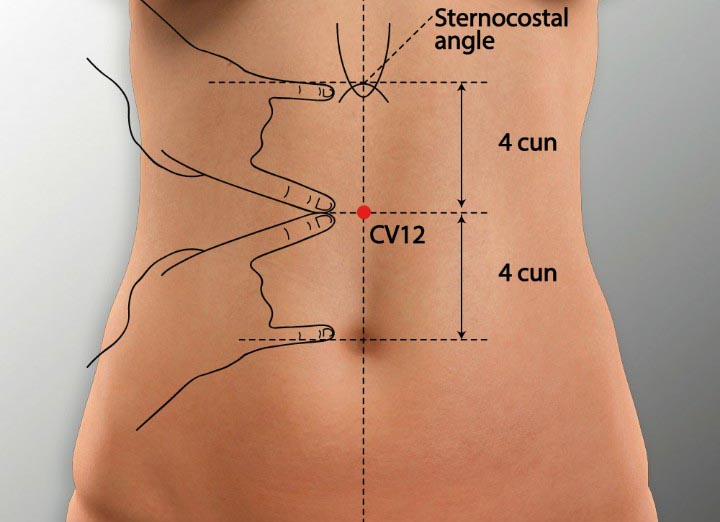
Location: On the epigastrium on the anterior midline, 4 cun above the umbilicus.
Effect: Fortifies the spleen, harmonizes the stomach, promotes digestion, and disperses stagnation.
3. CV 4 Acupoint (Guanyuan)
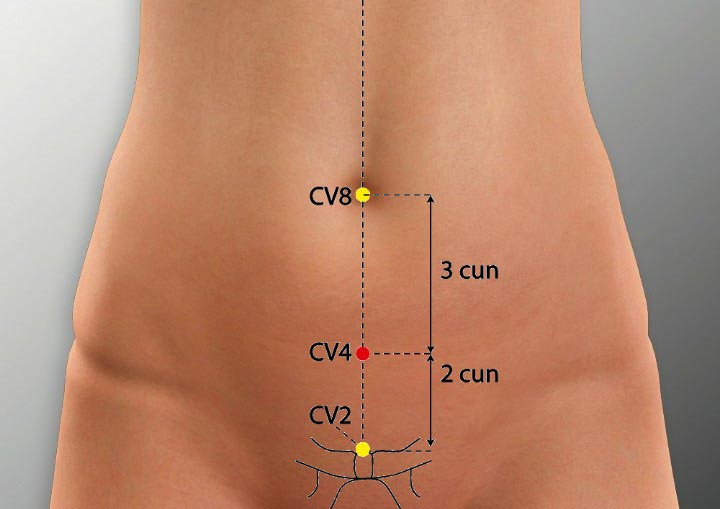
Location: On the lower abdomen on the anterior midline, 3 cun below the umbilicus.
Effect: Warms and supplements original yang, and rectifies the spleen and the stomach.
4. BL 17 Acupoint (Geshu)
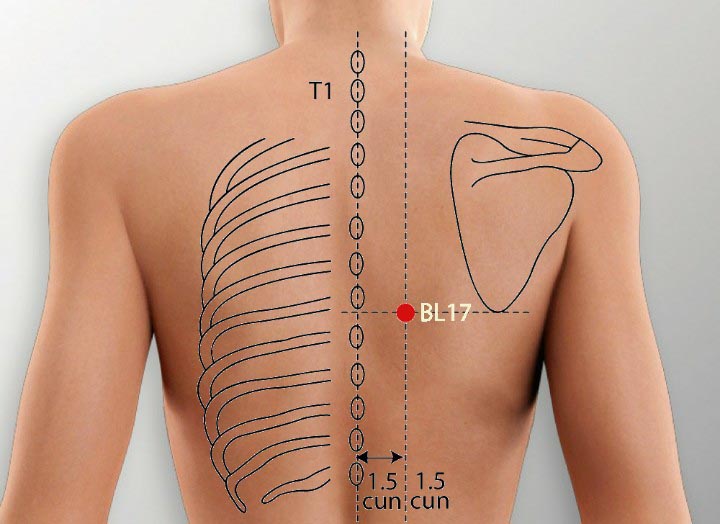
Location: 1.5 cun lateral to the posterior midline, level with the lower border of the spinous process of the seventh thoracic vertebrae.
Effect: Rectifies qi and blood, disinhibits the diaphragm.
5. BL 18 Acupoint (Ganshu)

Location: 1.5 cun lateral to the posterior midline, level with the lower border of the spinous process of the ninth thoracic vertebrae.
Effect: Soothes the liver, rectifies qi, and harmonizes the stomach.
6. ST 37 Acupoint (Shangjuxu)
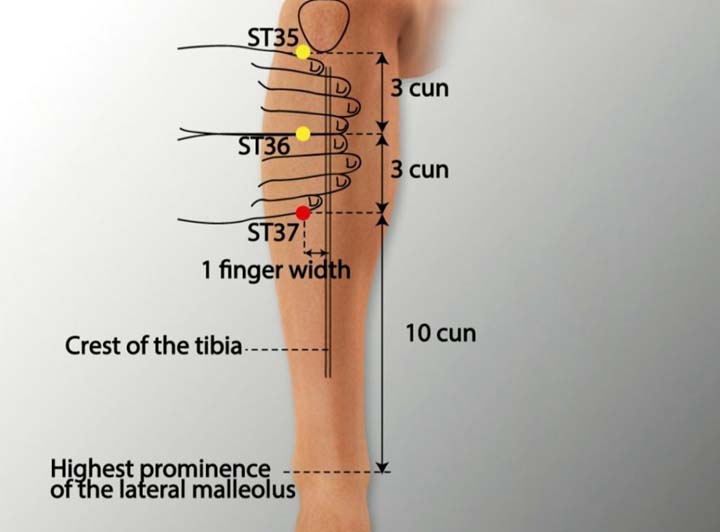
Location: 6 cun below ST 35 and 3 cun below ST 36.
Effect: Regulates the spleen and stomach, loosens the intestines, descends qi.
Moxibustion treatment methods
- Double-point mild moxibustion on ST 25. The patient should feel heat penetrating into the abdominal cavity or expanding along the sides to the lumbar area. ST 25 is an important acupoint for treating diseases of the spleen and the stomach. It dissolves stasis to relieve pain and rectifies qi to disperse stagnation.
- Double-point mild moxibustion on CV 12 and CV 4. The patient should feel the heat penetrating into the abdominal cavity. CV 12 is on the Ren Mai and is the front-mu point of the stomach. It can fortify the spleen, harmonize the stomach, promote digestion and guide out stagnation. CV 4, the intersecting point of the three yin channels of the foot, can warm and supplement the original yang, and fortify the spleen and stomach.
- Double-point mild moxibustion on BL18. The patient should feel heat penetrating into the abdominal cavity or expanding over the back and lumbar area. BL18 is where the liver qi gathers at the back, and can thus soothe the liver, rectify qi and harmonize the stomach.
- Double-point mild moxibustion on BL17. The patient should feel heat penetrating into the abdominal cavity, expanding over the back and lumbar area, or transmitting along the sides to the chest. BL17 is the meeting point of the blood, and thus can regulate blood and qi, and disinhibit the diaphragm.
- Double-point mild moxibustion on ST 37. The patient should feel heat penetrating deeply while transmitting along the foot yangming stomach channel. ST 37 is the lower he-sea point of the large intestine and can regulate the stomach and intestines, loosen the bowels, and descend qi.
Treat once a day, choosing one or two groups of the above acupoints. Ten treatments make a course. In total, give two or three courses with a break of two to five days between each course.
Conclusion
Moxibustion can warm the stomach and dissipate cold, or in biomedical terms, it can boost gastric motility and promote gastric emptying. These effects are reliable and do not come with adverse side effects.
The patient should be encouraged to get plenty of physical exercise, maintain a balanced mood, and keep eating habits including avoiding fatty, sweet and irritating food.

